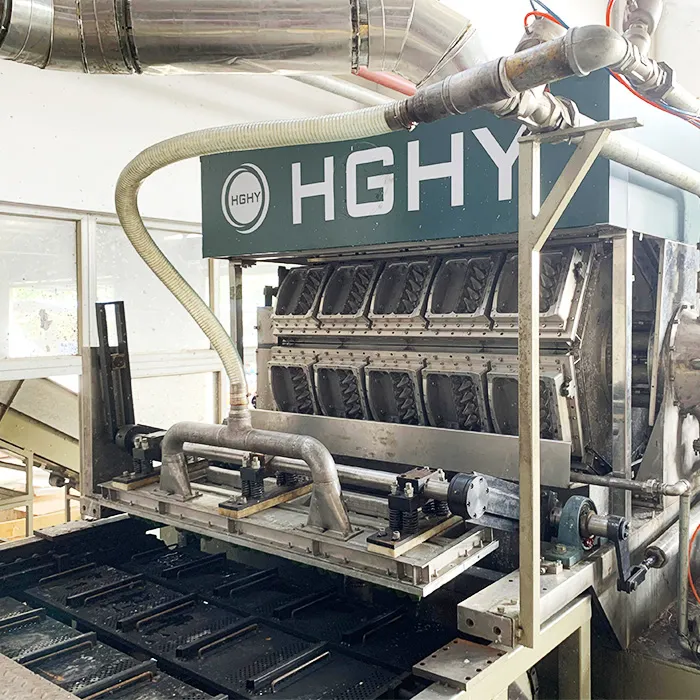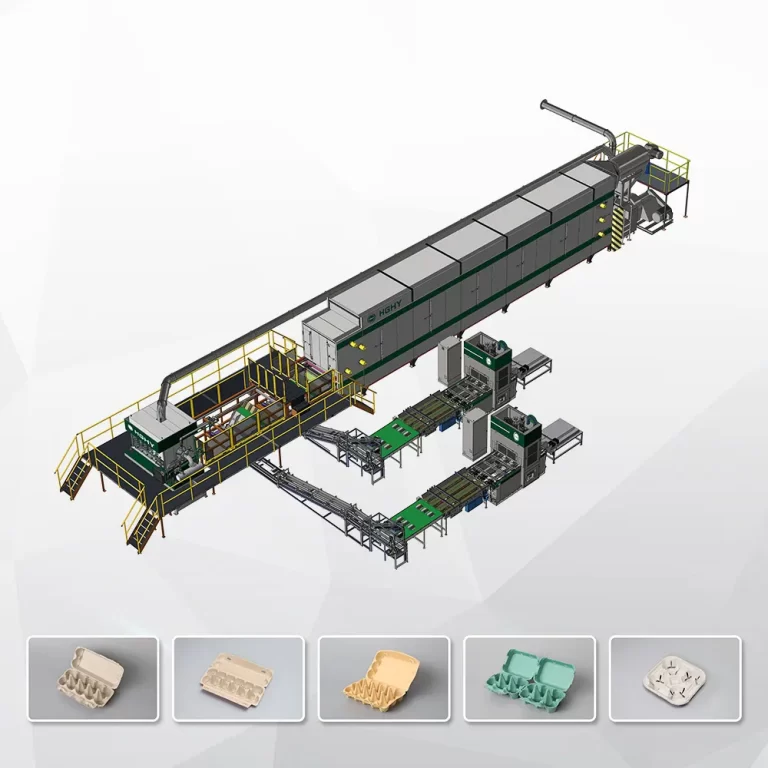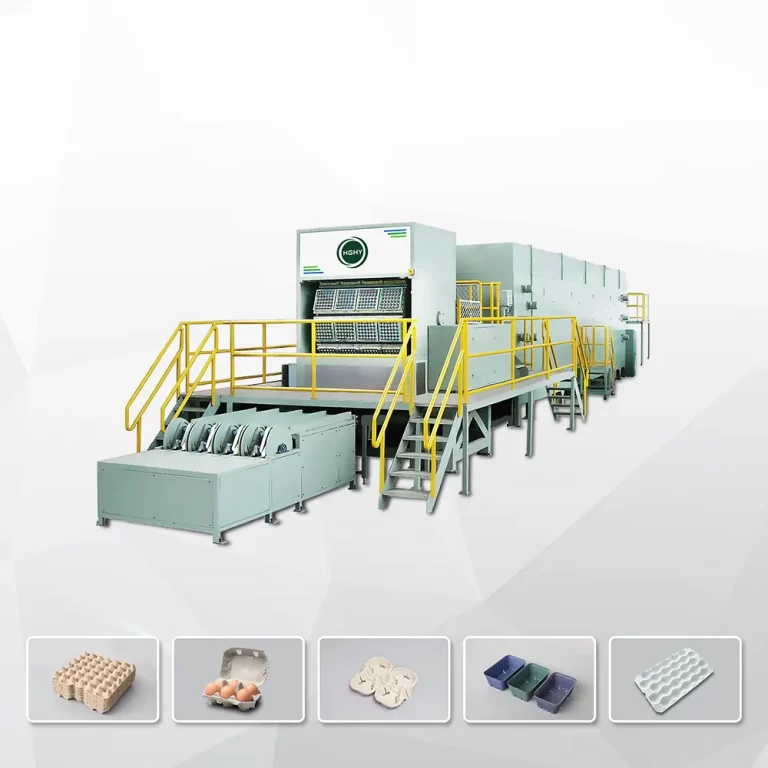To build an egg carton production line, careful planning is required for site selection, factory space, and equipment configuration. Here’s a detailed guide covering these aspects:
1. Site Selection
When choosing a location, consider the following factors:
Convenient Transportation: The site should be near major roads or transport hubs to facilitate the transport of raw materials and finished products.
Reliable Water and Power Supply: The production line requires significant amounts of water and electricity, so the site must have stable access to these utilities.
Environmental Regulations: Since the process involves water circulation and waste treatment, ensure the site complies with local environmental regulations and is located away from residential areas and sensitive ecosystems.
Labor Availability: Select areas with sufficient labor supply and moderate labor costs to help reduce operational expenses.
2. Factory Size
The required factory space depends on the scale of production and the layout of the equipment. Here’s an approximate breakdown:
Small-scale production line: Requires around 500 to 1000 square meters, ideal for a daily output of 5,000 to 10,000 egg cartons.
Medium-scale production line: Needs about 1,000 to 3,000 square meters for a daily output of 10,000 to 50,000 cartons.
Large-scale production line: Typically requires over 3,000 square meters, with a daily output exceeding 50,000 cartons.
The factory layout should include distinct areas for raw material storage, forming machines, drying systems, finished product storage, and wastewater treatment.
3. Equipment for the Egg Carton Production Line
The production line usually includes the following main equipment:
Pulping System: This includes a pulper, refiner, and agitator, used to prepare paper pulp from recycled paper and other materials.
Moulding Machine: The core machine of the line, responsible for shaping the egg cartons from the pulp. Common types include rotary moulding machines and reciprocating moulding machines.
Hot Press Machine: Used to press and strengthen the egg cartons, improving their appearance and durability.
Drying System: Cartons can be dried either by natural air-drying or through hot air drying systems, with the latter being more efficient for large-scale production. Drying equipment may include multi-layer or single-layer drying lines.
Automatic Stacking Machine: Arranges the finished egg cartons in stacks, facilitating transportation and storage.
Automatic Packaging Machine: Automates the packaging process, reducing manual labor.
Wastewater Treatment System: As the production process generates wastewater, a treatment system is necessary to recycle water and minimize discharge.
Auxiliary Equipment
Air Compressor: Provides the required air pressure for the forming and drying processes.
Steam Boiler (if using steam drying): Supplies the heat energy needed for drying the egg cartons.
HGHY EGG CARTION MACHINE
The Hot Press Egg Crate Making Machine is specifically designed for the efficient mass production of egg cartons and related packaging products. It is capable of producing a comprehensive range of items that are essential for the safe packaging and transportation of eggs, such as egg cartons, egg boxes, cup holders, small baskets, and bottle trays, all of which require hot pressing after drying. The machine excels in manufacturing these products, ensuring high efficiency and precision to meet various packaging needs.

Conclusion
In summary, the size and equipment requirements of an egg carton production line depend on the production scale. Smaller operations will require less space and fewer machines, while large-scale lines will necessitate greater investments in both factory area and machinery.



